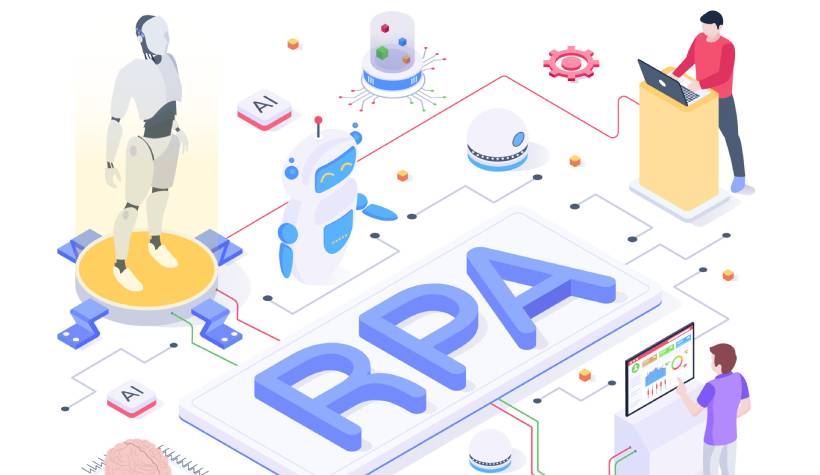RPA Solutions
Robotic Process Automation (RPA) solution implementation involves translating the insights gained during the process discovery phase into a well-structured plan for implementing automation. It's the stage where we define the blueprint for creating and deploying RPA bots that will streamline processes and deliver tangible results.
Here's a guide of the steps that we perform to implement RPA solutions for our customers:
- Process Scope Refinement: Review the processes identified during process discovery and further refine the scope of the process that will be automated. Define the specific tasks, steps, and sub-processes that the RPA solution will target.
- Process Flow Diagram: Create a detailed process flow diagram that illustrates the sequence of actions performed by the RPA bot. This diagram helps stakeholders visualize how the bot will interact with various systems, applications, and data sources.
- Task Mapping: Map each task within the process to the corresponding RPA actions. Identify which tasks will be fully automated, which will require human intervention, and where decision points exist.
- Bot Interaction with Systems: Determine how the RPA bot will interact with different systems and applications. Specify the user interfaces, fields to be filled, buttons to be clicked, and data to be extracted or entered.
- Data Handling and Transformation: Define how the RPA bot will handle data throughout the process. Specify data extraction, transformation, validation, and any calculations required during automation.
- Exception Handling: Plan how the RPA bot will handle exceptions and errors that might occur during automation. Outline the steps for notifying human operators, escalating issues, and ensuring smooth process continuation.
- Integration and Connectivity: Identify the integration points between the RPA bot and other systems, databases, APIs, or web services to ensure that the RPA solution seamlessly interacts with existing technology infrastructure.
- Security and Compliance: Address security concerns by defining access controls, encryption methods, and data protection measures to ensure that the RPA solution complies with relevant regulations and standards.
- User Interface Design (if applicable): If the RPA bot requires a user interface for monitoring or interaction, design an intuitive and user-friendly interface that displays bot status, logs, and allows for manual intervention when needed.
- Error Handling and Logging: Develop a robust error handling mechanism that captures errors, logs relevant information, and provides insights for troubleshooting and improvement.
- Testing Strategy: Outline the testing approach for the RPA solution. Plan for unit testing, integration testing, and user acceptance testing to ensure the bot's accuracy, reliability, and compliance with the process requirements.
- Scalability and Maintenance: Consider the scalability of the RPA solution. Ensure that it can handle increased workload and can be easily maintained and updated as processes evolve.
- Documentation: Document the entire solution design, including process flows, task details, system interactions, error handling, and testing strategy. This documentation serves as a reference for developers, testers, and stakeholders.
- Stakeholder Alignment: Present the solution design to key stakeholders, including process owners, IT teams, and management, to ensure alignment and gather feedback before proceeding to development
